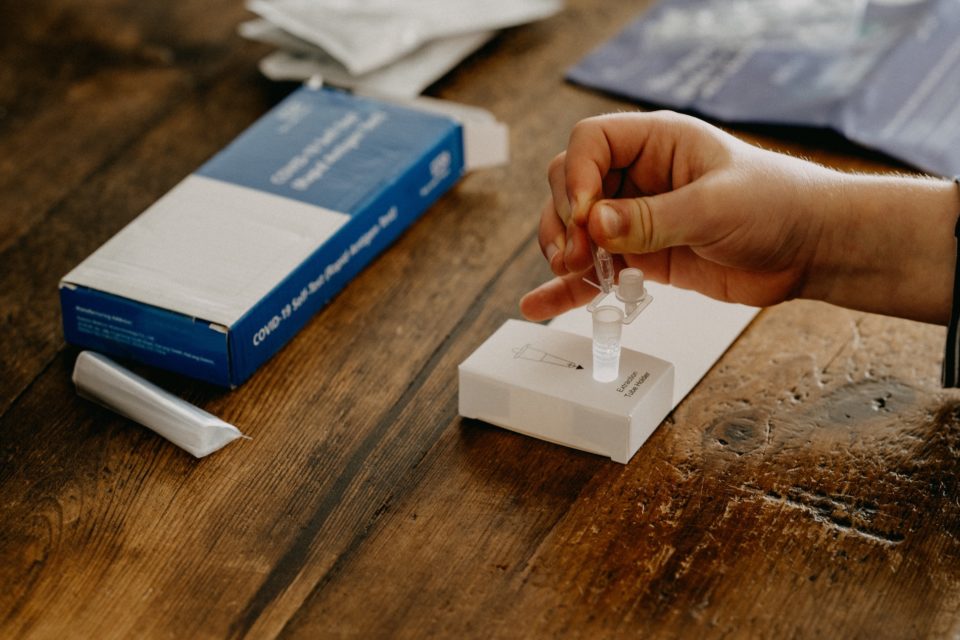Two months ago, I flew on my first international flight since the start of the pandemic. And while I have spent the better part of two years researching and writing about how COVID-19 has reshaped the travel landscape—including changing air travel requirements—I still found the process of planning to comply with said requirements confusing.
For the first time, I had to make decisions about how I would comply—i.e., should I book my COVID-19 tests locally, or purchase at-home tests to bring with me?—as well as how to prepare for the worst—as in, what’s my plan if I test positive abroad?
Like many travelers, I saw my destination’s requirements change from the time I booked my trip, to when I actually took my trip, and of course, after I returned from my trip, too (looking at you, Omicron).
Given the fluid nature of international travel requirements, here’s what you need to know (as a U.S. traveler) to be as prepared as possible to comply and fly.
Who needs to test for international travel?
In short, everyone. Because regardless of your vaccination status (or international destination), all inbound travelers to the U.S. must provide a negative test result before boarding. As of December 6, 2021, all passengers traveling to the U.S. must get tested (and provide a negative result) for COVID-19 no more than one calendar day before departure. Previously, the requirement was within three days from departure.
But let’s back up. What about the requirements of your destination outside the U.S.? That’s where requirements can vary widely—and change constantly.
For example, back in November, I flew from Detroit (DTW) to Edinburgh, UK (EDI) via Amsterdam Airport Schiphol (AMS). At the time, I was required to take two tests—the UK’s Day 2 test and the pre-departure test required by the U.S.
Because I was in transit and for the allotted window of time, I did not need to show proof of vaccination or test results during my layover at AMS. That said, if I had plans to stay in Amsterdam, I would have been subject to additional requirements.
Tip: Always check the destination requirements for your layover airports. Some countries have entry requirements (including proof of vaccination and/or testing) that apply to travelers regardless of your length of stay.
As you plan your next international trip, be sure to research and prepare to comply with the testing requirements at your destination as well as those for when you return home. Keep in mind that these requirements might change between booking and traveling—or even while you’re on your trip.
Also keep in mind that vaccination requirements vary from country to country, as well. While you may not need to be vaccinated for entry, you may be required to quarantine and/or subject to additional testing during your trip.
Read more: TripIt Adds New Enhancements for Navigating Travel Based on Your Vaccination Status
Where can I find information about my destination’s testing requirements?
To stay in the know about testing requirements related to my trip, I consulted TripIt’s COVID-19 guidance feature as well as my destination’s official government website (in my case, the Scottish government’s COVID-19 advice for international travelers).
Your airline might also provide you with this information, as well as provide guidance to help you fulfill those requirements.
For example, after booking my flights, Delta Air Lines sent me a pre-trip checklist, including resources for determining the testing requirements at my destination, as well as what I’d need to return to the U.S.
Other airlines have also introduced similar resources. United Airlines launched its Travel-Ready Center to help passengers understand and comply with travel requirements. American Airlines also created a similar toolkit.
Where can I get a COVID-19 test?
… the magic question. Thankfully, TripIt’s COVID-19 guidance feature showed me that my airline offered assistance with booking tests. Some of the options available to me were:
- Pre-purchase at-home tests that I could take with me on my trip
- Book tests at a testing facility, e.g., the local airport
I chose to pre-purchase two tests to bring with me: a self-administered PCR test that I would need to drop in the mail to satisfy my Day 2 Test requirements, and a rapid test conducted via live video observation to satisfy the pre-departure test requirement for entry to the U.S.
While pre-purchasing tests was certainly the more costly option (versus booking locally), I was willing to pay for the peace of mind. That said, I know of other travelers who’ve preferred to book tests at their hotels, local pharmacies, and/or local testing sites.
Tip: Be sure to research the requirements related to the tests you need to take during your trip. For example, the UK requires all international travelers to complete a Passenger Locator Form before departure (I had to show this form upon checking in at DTW). On this form, I had to provide the confirmation number of my pre-booked Day 2 test. In other words, I couldn’t have left the booking/taking of this test up to chance, or until I arrived in the UK. It had to be booked ahead of my trip.
That may not be the case at your intended destination, but be sure you find out this information ahead of your trip.
How will I present my negative test result(s) at the airport? What other documentation will I need?
While many airlines have adopted vaccine passport apps where you can upload your test results directly, others are yet to go the digital route.
In my case, I had my negative test results on my phone (both in a PDF doc in my email, as well as in the testing provider’s app). Upon my return journey to the U.S., I presented the digital test results at the EDI airport check-in counter. I was also asked to present my CDC COVID-19 vaccination card at this time. (Note: As a U.S. citizen, I did not have to be vaccinated to return to the U.S. However, at the time of publication, all non-citizens are required to show proof of vaccination for entry to the U.S.)
During my return layover at AMS, I was required to complete a U.S. entry attestation form stating that I had tested negative for COVID-19 (or had recovered/could provide a recovery certificate) and that I was fully vaccinated. The completed document is required for check-in and/or boarding, per U.S. federal law.
All of my travel documents—attestation form, CDC card, and negative test result—were reviewed by an airline employee prior to boarding.
What happens if I test positive for COVID-19 when I’m abroad?
Let’s face it: this is a very real risk.
One that you should plan ahead for, because if you test positive while abroad, you will have to quarantine—at your destination—until you recover.
Some destinations have specific requirements, such as buying mandatory COVID-19 health insurance prior to your trip and/or quarantining in government-mandated facilities. Others have less robust infrastructure, but will still require you to quarantine at a hotel or vacation rental—likely at your own expense.
Some travel insurance policies can help offset the costs of extending your trip due to a positive test result. There are also services available to fly you home—privately—should you test positive and require medical evacuation.
Regardless of which level of preparedness you choose, remember to always take the necessary safety precautions to prevent contracting (and/or spreading) COVID-19 while you’re traveling, including following all local guidelines and mandates.
As a reminder, you can find out about your destination’s vaccination and testing requirements as well as information about scheduling COVID-19 tests through your airline right in TripIt’s COVID-19 guidance feature. These details are available to all TripIt users.
And if you’re a TripIt Pro user, you can also search the feature to find this information for destinations you’re planning to visit without needing them to be part of a TripIt itinerary right in the Pro tab of the app.













